
04 AUTHORS AGAINST RESTRICTIONS
STL authors, students and staff discuss the recent bills against books.
ENGINEERING CLASSES BUILD

KNITTING KNOCKOUT



STL authors, students and staff discuss the recent bills against books.

KNITTING KNOCKOUT

Editor in Chief Associate Editor Copy Editor Online Editors
Production
Aarushi Bute
Akhila Swarna
Anika Talyan
Rue Siddiqui
Prashu Sidella
Pranav Sriraman Annabelle Miller

Anvi Talyan Parker Brandt
Tiona Merritte
Shyam Punnachalil Jacob Robinson
Opinions
Liza Cooper
Emma Tyulyayev
Aubrey Lacavich

Brie Inman
Elliott Jorgensen
Annie Alcorn
Aiden Burkhardt
Elle Devous Willem Hummel
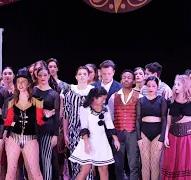
Claire Lowder
Elizabeth Neier
Emily Jorgensen
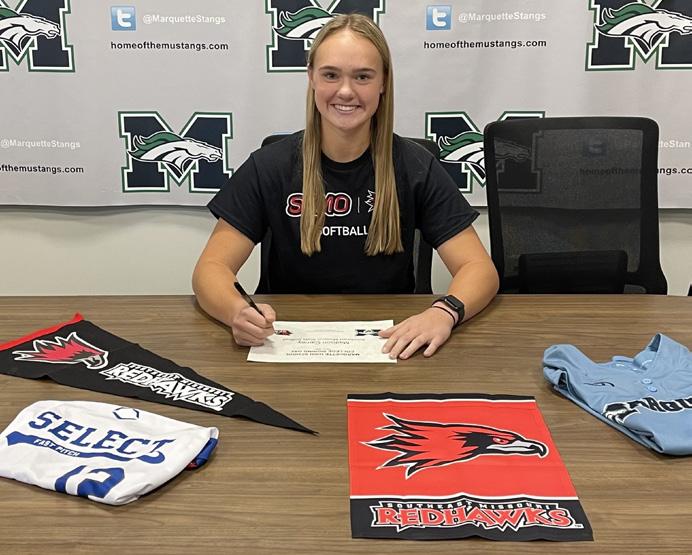
The Messenger is a public forum, published eight times a year by students in the News Production class at Marquette High School, Chesterfield, MO, 63017. The publication serves to inform readers about issues concerning the community.
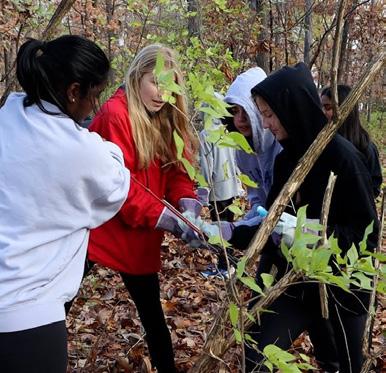

Opinions of Messenger columnists or the Editorial Board are not representative of the opinions of the entire Messenger staff or the administration. The full student publication policy can be viewed on the Messenger official website, marquettemessenger.com.
The Messenger takes responses for any issue. Send these to yourmhsnews@gmail.com. The Messenger reserves the right to edit submitted material and to refuse to print material because of space limitations, repetitive subject matter,




libelous content or any other reason the editor in chief and adviser deem appropriate, including advertisements and letters to the editor.
The Messenger is nationally recognized as a member of the National Scholastic Press Association (NSPA), Columbia Scholastic Press Association (CSPA), the Journalism Education Association, Missouri Journalism Education Association and Quill & Scroll. This year, the publication was named a Hall of Fame recipient and Quill & Scroll George H. Gallup award winner. Past issues have been named NSPA Pacemaker finalists and CSPA Crown finalists. The Messenger website is a Distinguished Site recipient.
The publication office is located in Room 226, (636) 891-6000 ext. 26228.
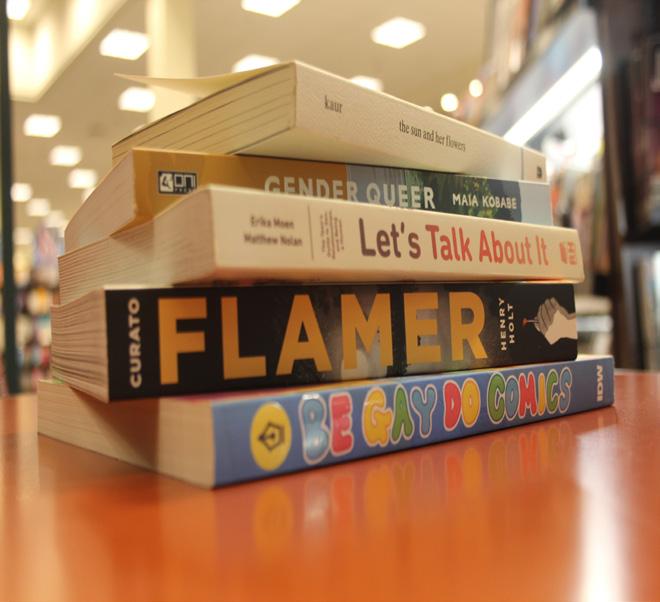
Almost four weeks after experiencing two threats at that both evacuated the building and prompted early dismissals, the district is in the process of making safety changes as a result.

“Safety has been a top priority of the district long before this incident happened,” Tyrone Dennis, district safety officer, said. “We have been looking to always improve safety because you can always add something.”
Dennis said the threats taught him to always be prepared for the unexpected.
“Communication is key and we try to share as much information as possible, as quickly as possible, so the rumor mill does not get out of control,” Dennis said.
Plus, he said it is reassuring to know that the law enforcement, students and staff are competent in evacuating the building in an efficient way.
“We evacuated the building two days in a row with no injuries, no accidents,” Denis said. “Although it was scary, even traumatizing, the process worked.”
Senior Mary Grace Watters was in the cafeteria when the social media threat was AirDropped to students on Friday, Nov.18, the second threat that week.
“You don’t expect something like this to happen,” Watters said. “You see it all over the news, but you think ‘no it’s not going to happen to me’.”
In both cases, the administration worked with the Chesterfield Police Department to identify those responsible for the threats.
Watters said she did feel safe returning to the building on Monday, Nov. 28, because of the police response she witnessed during the evacuations, but she would like to be able to carry self-defense weapons like pepper spray.
Principal Dr. Stephen Hankins said the code of conduct does not allow students to carry self-defense weapons like pepper spray.
Dr. Hankins said he is glad he was able to debrief with the district after the threats.
“I think that’s been very healthy for our school district, and also even for the first responders,” he said.
Dr. Hankins said even though the
school does practice drills, each emergency is unique, so it is hard to know what to expect. But, as long as students and staff take action, things will work out.
And although many students and parents are wondering about the identity of the perpetrators of the threats and
their punishment, Dr. Hankins said he cannot release the information because of legal issues.
“I can tell you that I know it’s been discouraging for the public,” Dr. Hankins said. “But unfortunately it’s not something that we can discuss.”
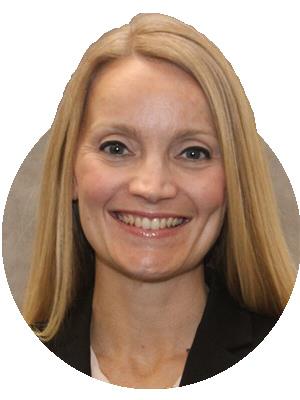 annabelle MILLER
annabelle MILLER
Three director positions are open on the Board of Education (BOE) and approved candidates will be on the April 2023 ballot.
The BOE and its directors are responsible for approving the district’s budget, establishing goals, creating policies and ensuring the district’s performance as a whole.
The filing window for candidates opened Tuesday, Dec. 6, and closes Tuesday, Dec. 27. Candidates can apply at the RSD Administrative Center Monday to Friday from 8 a.m. to 4 p.m., except for the days of Dec. 23 and 26.
Arya Patri, senior, hopes to be a political science major in college. She encourages all seniors who are eligible to vote to register before the BOE election.
“Voting is the best way to make an impact, especially at such a local level,” Patri said.
Experience in education along with involvement in the community are important for a BOE candidate to have, Patri said.
“It’s going to affect the community whoever you vote for,” Patri said. “I would hope we vote for some-
The filing window for candidates opened Tuesday, Dec. 6, and closes Tuesday, Dec. 27.
BOE Elections will be held on April 4, 2023.
one who can actually make an impact.”
Jaime Bayes, BOE president, said the BOE is looking for candidates who are willing to work with the BOE to support students.
“Someone who comes in with the heart for helping all kids and the mindset that the Rockwood School District is a fantastic school district,” Bayes said.

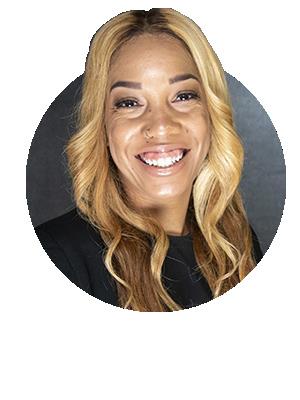


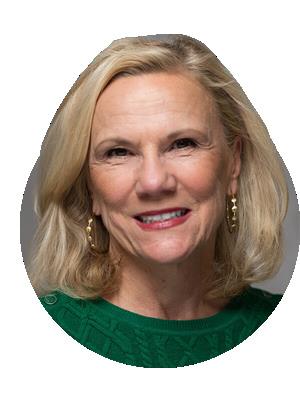
She said candidates should research and ask questions about the positions before applying. Information about the positions is posted on the district’s website, www.rsdmo.org, and available through the superintendent’s office at (636) 733-2005.
Language arts teacher Jordan Shelton, representative of Rockwood National Education Association (RNEA), said the organization will be getting more involved with BOE elections this year.
RNEA will meet with potential candidates to ask them questions about their stances on issues that effect education. Based off their responses, RNEA will make endorsements for the candidates.
Shelton said it’s especially important to register to vote in local elections because they affect the community, and she hopes seniors will take the initiative.
“Our seniors need to understand the importance of voting to reflect the type of school they want to see,” Shelton said.
Superintendent Dr. Curtis Cain said the BOE plays an important role in the district.
“The work is not always easy, but we’re here for all kids. It’s all very worthwhile,” Dr. Cain said.
The qualities of a good BOE candidate, Dr. Cain said, are being supportive to the district, having accountability and being transparent.
“We’re here for the district and the community, and I think someone who understands that can make a fantastic Board of Education director,” Dr. Cain said.

When Kelly Jensen, author, heard her life work was potentially being banned in the state of Missouri, she knew she had to act.
Her works include “BODY TALK,” “HERE WE ARE” and “(DON’T) CALL ME CRAZY.”
Along with 22 other authors, Jensen signed a petition in association with the nonprofit PEN America against 11 Missouri school districts, including RSD, for their implementation of book bans.
The books were banned in response to the new law, SB 775, which went into effect in August and states that providing “explicit sexual material” to students is a class A misdemeanor, punishable by a penalty of up to one year in jail and a $2,000 fine for those convicted.
Jensen said she wants to know what standards constitute explicit content as all three of her books are being challenged, especially “BODY TALK.” According to the bill, she said, the explicit content is that it features a series of illustrations of nude bodies of a variety of genders, races and abilities.
“It’s no more ‘explicit’ than the statue of David, and it’s meant to be a message to teen readers—the book’s target audience—that all bodies are good bodies,” Jensen said.
As of Tuesday, Dec. 13, 22 books have been removed from district libraries, which Jensen said is a form of control that undermines the professional skills of every librarian and educator.
Jensen said the audience she particularly writes for, the marginalized audience including people of color and queer identities, is under attack.
Due to recent state legistlation, 22 books have been pulled from district libraries. The complete list is available on the district website.
“Standing up for the books is symbolic of standing up for the people who need these books and whose voices are within them,” Jensen said.
Margaret Sullivan, lead librarian for RSD, said there was a committee involving all librarians to decide if a book violated the law.
The district decided to remove the graphic novels based on the advice from the district lawyers, Sullivan said.
“The law ended up superseding our collection policies because it’s the law,” Sullivan said.
Though the spokesman for St. Louis County Prosecuting Attorney Wesley Bell told KMOV that they are not looking to prosecute nonviolent and low-level offenses like providing books, Secretary of State Jay Ashcroft has proposed a bill that will restrict funding to public libraries based on new collection requirements.
“I know that a lot of Missouri libraries are doing a good job on this and reflecting the values of the taxpayers that paid for the materials,” Ashcroft said in a written statement. “But I just think it’s good to have some guidelines to make sure that we’re reinforcing that parents are in control.”
In response, the St. Louis County Public Library has released a statement encouraging the community to comment against the bill.
While Brittany Sharitz, librarian, said the proposed bill will not affect MHS libraries, the state will be depriving families of valuable information as sometimes public libraries are the only place they can go to for quality information.

“Libraries and librarians are always in support of open access of information to all people, and whenever limitations are put on that, we fear for the people in those communities,” Sharitz said.
Kris Kleindienst, owner of Left Bank Books, started a Literacy & Justice project from the Left Bank Book Foundation in response to Wentzville School District removing books in January. The Literacy & Justice Project sends a free banned book to anyone who requests one through their website.
“We want people to read these books,” Kleindienst said.
Left Bank Books started in the midst of the Civil Rights movement, to carry the voices of those who normally weren’t represented in media and other bookstores, Kleindienst said.
“We still have that core principle,” Kleindienst said. “We carry books from the silenced, marginalized and those that oppose the power structure.”
Kleindienst said that regardless of any bills and protests against books, she has no plans to take any books off the shelves.
“I am going to exercise my First Amendment rights,” Kleindienst said. “These laws prey on the fears that children are not being protected, and what they’re really doing is trying to silence people of color, LGBTQIA+ and people who are marginalized by white supremacy.”
1. Gender
by Maia Kobabe
The novel reflects on the author’s exploration of their sexual and gender identity.
2. Flamer by Mike Curato

Curato recounts his experiences of homophobic bullying due to his appearance and actions during a Boy Scout camp.
3. The Sun and Her Flowers by Rupi Kaur

The book contains poetry and drawings with themes about healing, love, loss and femininity.
4. Let’s Talk About It: The Teen’s Guide to Sex, Relationship, and Being a Human by Erika Moen and Matthew Nolan
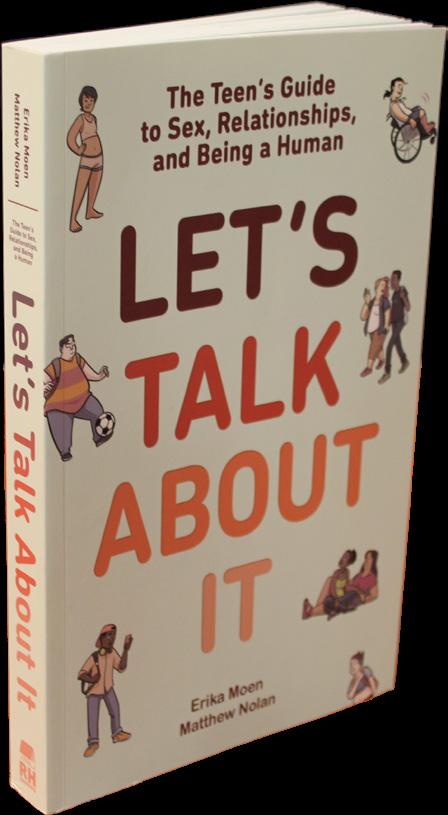
The novel provides advice about a variety of topics and situations that teenagers experience: friendship, body image, rejection, etc.
The comic collection includes works from more than 30 LGBTQ+ illustrators, with stories recounting their personal experiences and queer history.


Losing control of her car, Hannah Shockley, senior, felt helpless as her rear passenger door hit a police car.
Shockley had been driving during the winter of 2021 when she saw a police car parked ahead in a turn-only lane. When she tried to swerve out of the way, her car skidded on ice in the road.
“I was in shock,” Shockley said. “As a teenager, you never think something bad can happen to you until it does.”
Her car, a 2010 Ford Escape, wasn’t totaled but her passenger door was unable to open, with the handle snapping clean off. Shockley ended up with a two-year probation on her license.
The old car had a braking system that Shockley said was not as quick as she would have liked.
Driving is fun for Carl Taraporevala, sophomore, but receiving his license has made him worried about being a new driver in the winter.
“I am worried about driving in the snow because I haven’t really had to drive through it yet,” Taraporevala said.
By driving with more focus and paying attention to his surroundings, Taraporevala is trying to be safer during his first winter.
of weather-related car accidents occur on snowy and icy pavement.

U.S. Department of Transportation
Since her accident, Shockley has had to get a new car and said safety features were at the forefront of her family’s decision. They landed on a 2022 Toyota Corolla because of safety features like the braking system.
“I feel safer knowing that my new car beeps if I’m braking too fast or if I’m too close to a car,” Shockley said.
Shockley said she also is trying to drive safer during winter weather by driving slower or contacting her parents if she thinks it’s unsafe.
With winter officially starting on Wednesday, Dec. 21, other students are also preparing to drive in the winter weather.
Taraporevala said his Toyota Avalon makes him feel safer about driving this winter. Features like “Lane Assist” show the car’s blind spot when changing lanes.

During his 50 years in car repair, Rick Saitta, co-owner of Saitta Auto, has seen many accidents during the winter.
Front wheel drive, when the engine uses only the front wheels, is not something drivers should rely on, Saitta said.
“Little do they know that when the tire loses its grip because of snow and ice, you don’t have anything,” Saitta said. “You’re going wherever gravity takes you.”
Saitta said having a good braking system and windshield wipers also are vital.
“Don’t leave the driveway scraping the inside of your windshield so you can see through a little hole,” Saitta said.
He has seen cars in his shop wrecked as a result of poor visibility.
A windshield wiper is good, Saitta said, when it is quiet and can clean the entire windshield in one swipe.
“Be aware of your driving conditions and drive accordingly,” Saitta said.
The 2022 Toyota Corolla was named a Top Safety Pick and is one of the safest cars for new drivers. Hannah Shockley, senior, got a Toyota Corolla after damaging her Ford Escape. Information from the Insurance Institute for Highway Safety.
Shahalmas Shah, freshman, uses the driving simulator in the Driver’s Ed classroom. The machine can simulate different weather conditions for students to practice driving in. “It shows us what speeds we have to go and what it will be like driving in real life,” Shah said.

Prepare your car. Having items like an ice scraper, jumper cables, flashlight, blankets and a cell phone charger is recommended. Check the headlights, brake lights, turn signals and emergency flashers before driving.
Know what to do in an emergency. If you are stuck in snowy weather, stay with your car and turn on the interior lights. Clear snow from the exhaust pipe to avoid carbon monoxide poisoining.
Check your tires. When the weather gets colder, tire pressure drops. Make sure the tires are inflated to the vehicle manufacturer’s recommended pressure.
Information from the National Highway Traffic Safety Administration
After visiting Chicago and seeing its vast, towering skyscrapers, Thanvi Ravala, junior, gained an interest in architecture.
“For many people, nature is something that they might consider beautiful,” Ravala said. “I feel the same way for the skyscrapers I saw.”
Ravala decided to start the Architecture Club, with the goal of formulating designs for different types of 3D models and building them with a hands-on approach.
Kelsey Starr, art teacher, sponsors the club because of her fascination with 3D sculptures.
“With 3D, we create things with different materials, and architecture just perfectly fits in that role,” Starr said.
Starr said she enjoys seeing the design process of 3D sculptures in the club with the students involved.
“I love the brainstorming and creativity behind it,” Starr said. “I love seeing what my students can make and design with from just simple ideas.”
Starr said 3D art and architecture is good for
students’ brains.
“Architecture develops those ideas and creates problem-solving skills inside your brain that you will hold onto for the rest of your life,” Starr said. “It’s so good for you. It’s almost like having your vegetables.”
Starr is in the process of acquiring more resources from architectural businesses in the St. Louis area.
“It’ll be very beneficial for students to work with resources that actual architects work with,” Starr said.
Saadhvika Mohan Singh, junior, joined the club because she wanted to express herself.
“It takes a lot more creative energy in comparison to something like drawing,” Mohan Singh said.
Mohan Singh enjoys designing architecture to lift people up.
“Being able to express yourself through architecture and sculptures allows for people to be there and feel your impact through your message. It’s empowering,” Mohan Singh said.
Engineering Design and Development teaches students how to use their problem-solving skills in order to create a solution to a real-life inconvenience they face.


Rusty Willis, senior, undertook finding a faster way to update trail condition monitoring apps. As an avid biker, Willis comes across the problem of unusable trails quite often, even if they aren’t marked on the apps.
His project is a kiosk located at a park that will update the trail condition apps when someone submits an update. Inside, protected with waterproof material, a computer chip will receive and send the updates.
“I’m replacing the apps with a physical kiosk to make updating the app quicker,” Willis said.
“It’s so good for you. It’s almost like having your vegetables.”
Kelsey Starr, art teacher
Janyla Holsur, senior, is excited to start her weaving project this week.
Holsur is one of many students taking the new Fibers and Printmaking class.
Holsur said hooking looms are used in the course along with woodcarving and plaster.
The class helps teach time management and patience, Holsur said.

“You have to wait for things to dry,” Holsur said. “It will take a whole class and then you have to wait until the next class so you can start working on it again.”
Melissa Wilson decided to teach Fibers and Printmaking after meeting with art teachers in the district during curriculum writing.

“Printmaking and fiber were kind of missing from the curriculum, so we put them together and made a new class,” Wilson said.
So far the class has completed printmaking techniques, macrame, silk screening and is just now starting a weaving unit. Students are using new tabletop looms for their unit project.

Wilson is allowing students to pick either printing or weaving for the final course project.

Miranda Linenbroker, senior, said her favorite part of the course is the many different techniques of printing. They have made their own stamps and have silk-printed tote bags and shirts.
“I like it because I took painting, and I think it’s easier than that,” Linenbroker said. “But it’s also fun because it’s something we’ve never done before.”
Ava Nordman, junior, is taking the class after receiving the recommendation from their counselor. Nordman’s favorite project was the intaglio project. They scratched a design into plastic, pushed ink into it and pressed it onto paper.
“The class is much more experimental compared to other classes,“ Nordman said. “You can do a lot more of what you want to do than just what the prompt says.”
Ava Westhues, senior, works on screenpainting and creates a stencil to apply to bags and shirts.


What might be an ordinary object used to attach photos and invites to a refrigerator to most is a collector’s item to sophomore Evan Voelker.
The collection began when Voelker was a child and his mother brought back a magnet from an international work trip. Voelker said he was intrigued by the design and wanted to know what magnets from around the world looked like. So, his mother continued the practice.
“They remind me that she was thinking of me during the trip,” Voelker said. “I get excited when she comes home because I get to see her again and I get a new magnet.”
Now, Voelker has 12 magnets and counting. He said his favorites are three from Dubai that are durable and of high quality.
“If something is meaningful to you, it’s absolutely worth it to collect it,” Voelker said.
Voelker isn’t alone in collecting. In fact, approximately 40 percent of the American population collects something, according to Psychology Today.
Like Voelker, many collectors collect items from around the world to serve as souvenirs and mementos.
While browsing a gift shop in Key West, Florida, as a child, Rayan Khan, junior, stumbled upon a keylime pie key chain. After being told the pie originated in Key West, Khan purchased the key chain as a memento of the trip.
“It became a habit,” Khan said. “Whenever my family went somewhere, we would get something that was unique to that geographic region. Something to remember that trip by.”
Since then, Khan has collected more than 100 souvenirs. His favorites include a china set depicting Australian birds from Australia, a wine bottle set from Hungary and a Mughal-era portrait from Pakistan.
“It’s cool to have things from different parts of the world,” Khan said. “Not only because it helps us understand and learn about different cultures, but also
because it has helped me learn a lot about myself and what my interests are.”
Similarly, Hannah Brandon, senior, has accumulated a piggy bank of various coins from around the world. Brandon said she credits her mom for the idea, as she would bring back the currency from whichever country she was traveling to for work.

Once Brandon began traveling herself, she continued the tradition.
Brandon said her favorite was the Bahamian dollar.
“I like to compare the coins to what we have in America,” Brandon said. “It’s crazy how a bunch of money in a different country really only means $1 in America.”

Brandon said the coins give her a glimpse into different cultures and parts of the world that she otherwise wouldn’t have.

“It’s a great way to have a souvenir,” Brandon said. “Especially if you don’t want to buy something.”
Another one of these collectors is Dylan Porath, sophomore.
Throughout his childhood, David Porath, sophomore, remembers building LEGOs with his family.

“They’re all around the house, my dad has them, my brother has them, so it’s a family thing,” Porath said.
His father’s love of the toy as a kid was passed down to him, and as a result, Porath has been collecting LEGO sets ever since.
Though his collection includes nearly 40 sets, Porath said the Minecraft ones hold a special place in his heart.
Porath said he plans to pass the tradition down to his own kids someday.
“When I’m older, I’ll collect even more, probably,” Porath said. “It’s one of those things that is always fun and nostalgic for me, so I want to pass that down.”
The feeling of nostalgia is the reason why Lisa Del Pizzo, science teacher, collects snow globes.
“I’ve always loved Christmas time,” Del Pizzo said. “When my kids were little, I’d get them Disney snow globes, and after that I continued to buy them. Now I
have a collection that I’ve named ‘snowglobe city’.”
Out of the 30 snow globes Del Pizzo has collected over the years, she said her favorite features a red station wagon with a Christmas tree on top.

“It just makes me happy,” Del Pizzo said.
While there are both internal and external factors that motivate people to collect, there is a psychologi cal explanation for it as well.
The endowment effect describes humans’ ten dency to value something more once they own it. Therefore, people feel more inclined to purchase and collect these items as they will hold more value to them, according to Shirley M. Mueller, neuroscientist and collector.

This phenomenon is called the oddball exper iment. Specific areas of the human brain light up when the unusual is presented, which can explain why people seek novelty when collecting.


Other collectors collect to feel closer to history through acquisition of antiques, and others may enjoy the intellectual satisfaction it brings.
Aside from these ideas, collectors are motivated by the simpler sense of pride when they find some thing to add to their collection.
“My collection is not the biggest, but I am pret ty proud of it and what it may some day become,” Voelker said.

Card shops, pawn shops, antique stores and gift shops are hubs for collecting.
Though the store specializes in baseball cards, they carry many sports-related items.


Tom Wallis, an associate at 1,000,000 baseball bards, has been a collector for 40 years. Wallis started collecting Chicago Cubs and Chicago Bears memorabilia while living in Chicago during his adolescence.
“It’s a part of your nostalgia, your memories as a kid,” Wallis said. “You know my dad took me to Wrigley Field when I was 8 years old, and seeing a baseball game for the first time and I got to meet a bunch of the Cubs players when I was eight years old, that’s really a cool thing.”
Wallis said he really loves sports as a whole, which sparked his interest in collecting.
“Well everybody collects something. It’s just a fun hobby, whether it’s Beanie Babies, antiques or Pokemon,” Wallis said.




Jamie Walters, manager at Chesterfield Antique Mall, has been a vendor at the store for eight years. Walters has noticed a change in the items that are popular now versus in the past.

“Now, collectibles are selling like crazy again,” Walters said. “There was a bit of a lull for a couple of years, but especially now that it’s Christmas time, people are collecting vintage christmas items. It’s funny when we have toys come in that are similar to the toys I played with as a kid.”
Walters said she interacts with hundreds of people every day, and each one is looking for something different to either add to or help begin their collection.
“Everybody collects something on some level,” Walters said. “It’s like a treasure hunt, who doesn’t want a good treasure hunt?”

Having a tendency to fidget, Lauren Secoy, senior, found the perfect hobby to occupy her hands: crochet.

“My hands always like having something to do,” Secoy said.
Secoy was first introduced to the craft when she was 12, after receiving a crochet kit from her grandma and inheriting crochet hooks and yarn from her great-grandmother. She had first struggled with it, but picked it back up during her freshman year after wanting to create a gift for her family.
Since then, she has created items such as scarfs, hats, bags, mittens and a sweater.

While Secoy does keep many of her creations, she said she enjoys gifting them to her family members for birthdays and holidays.
“I make scarves and bags because I think they work well as gifts, and they’re pretty beautiful,” Secoy said.
Though Secoy can’t always find time to crochet during the school year, she said that she likes to spend time during breaks doing the craft.
Secoy usually listens to podcasts or books while crocheting. Some of her recent favorites have been “The Porch” and “Set Apart," along with an audiobook of Sherlock Holmes stories.
Like Secoy, many other students and staff use crafts as an opportunity to de-stress or relax.

Fellow crocheter Bryan Craft, senior, started to crochet last year to create Christmas gifts, after
seeing TikToks that gave him ideas.
Craft’s first project was a jellyfish, and since then he has created flowers, gloves, mushrooms and a sweater.
For smaller items, such as his mushrooms or flowers, Craft said he usually takes three to four hours.
Craft said he can have trouble finding time for the hobby during school, but he usually ends up crocheting two times a week.
“It’s when I get the opportunity to and when I really get inspiration,” Craft said.
Though Katie Bauman, history teacher, doesn’t crochet, she is able to find the same comfort with knitting.
“I use knitting as a way to decompress after a long day,” Bauman said.
Bauman began knitting when she was pregnant, as she wanted to knit her soon-to-be daughter a baby blanket. After giving birth, Bauman put a pause on her knitting, but was able to pick it back up once she had more time.
Bauman said she taught herself how to knit, starting off with simple items like dishcloths and working up to more complicated projects like cardigans and shawls.

Usually Bauman has three to four projects in the works, but she said that she is putting her focus on knitting leg warmers for her niece’s Christmas gift.
“It gives me a sense of accomplishment that I get to actually wear the work that I create, or gift it to friends and family,” Bauman said.
1To begin, put the yarn around two fingers and pull the yarn through the twist. Pull the shorter of the two pieces of yarn until left with a knot. Then, put the crochet hook into
the knot and pull one side of the yarn until the knot is completly around the crochet hook.


Two of Lauren Secoy's, senior, favorite projects is her sunflower bags and Mario figures. The bags were inspired by two of her friends whose favorite flowers are sunflowers.
"When the first one turned out well, I decided to make more and use them as gifts," Secoy said.
She said they were made of many individual squares, which were easy to make one at a time.
2Next, wrap the longer piece of yarn under the hook. Then, using the hook, hook the yarn through the loop you made before.
3By then, you project should look something like this. Continue the same process until you get your desired length.
“After all that time I spent, I felt really accomplished knowing that I had created a piece of clothing,” Craft said.
The sweater was Craft’s biggest project, which he said took about 40 hours to complete.

Katie Bauman, social studies teacher, has been knitting for more than nine years. Because of her experience, she’s learned that more expensive yarn, such as wool, works best for her projects she plans to wear.
Her favorite thing to do with knitting is working with colors, specifically ombre, and lace work, as seen on the sweater she wore Wednesday, Dec. 11.

“I make scarves and bags because I think they work well as gifts, and they’re pretty beautiful."
Lauren Secoy, seniorPhotograph by Jocob Robinson
 akhila SWARNA
akhila SWARNA












Drink: Iced Vietnamese Coffee
The walls of the Wolf Cafe are filled with decor from rock ‘n’ roll posters to canvases of with art. The vibrant cafe makes the Wolf a comforting place and a must-visit location. With hints of rich caramel flavor, the iced Vietnamese coffee is pleasing to taste with its sweetness and slight caffeine hint, but for my coffeeaddicted taste buds, the flavor is too subtle.


Drink: Iced Caramel Macchiato Price: $5.34



While I did appreciate the kind service and spacious store interior, the coffee lacked espresso flavor. The majority of the drink was filled with vanilla-flavored milk and only a slight, buttery caramel taste from the caramel drizzle. The only coffee was a splash of espresso shot added to the top which didn’t pack much punch.




Drink: Iced House Vanilla Latte
When coffee is combined with convenience, I am immediately impressed. Kaldi’s Coffee in Ellisville is a drive-through only store that allows coffee-lovers like me the opportunity to get a custom-made coffee without any hassle. The iced housemade vanilla latte was powerful enough to appease my coffee-addicted taste buds. The vanilla taste was subtle, so my coffee was simply a regular latte.
Legislation signed by President Biden in June of this year discarded the universal free lunch program that was common in schools during COVID-19. Now, only students who qualify as needbased receive free lunches. But, some Missouri lawmakers are arguing the state can afford to provide free lunches for all.
“I think we should provide it for everybody because everyone eats lunch here. I think the food should be free like it was like for COVID.”
SAM DENDREAU, freshman NAVIN RAMAMOORTHY, sophomore
NAVIN RAMAMOORTHY, sophomore

“I think they should do it for need-based students only. They shouldn’t go throughout the day with an empty stomach and you need food to do work and succeed. And, people that don’t get food should get that opportunity.”
“It’s a waste of money to have them be free for everyone. A lot of people end up wasting food from the free lunches.”
GABRIELLA POWITZKY, senior RICK REGINA, principal
RICK REGINA, principal

“Selfishly, as the father of three in the Rockwood School District, it was nice when my own personal kids got to get their lunch without me having to dump money in their account. So, selfishly, I loved when everyone had a free lunch.”
The rhythm of panicked feet hitting the floors in a hurry to exit the building filled the hallways. The incitement of this chaos was a message sent out to parents and students on Friday, Nov. 18: “[RSD]
ALERT: Marquette High School is evacuating and dismissing early due to a social media threat that is under investigation.”
This alert came after students throughout the school were AirDropped threat that targeted a specific classroom.
Throughout lunch and up until the threat’s referenced time of 12 p.m., students were frightened by a terrifying prospect: the threat of a school shooting.

The district follows the 4Es: educate, evade, escape and engage. Yet, every intruder drill this school year only focused on the second “E,” evade or avoiding the threat by locking and barricading classroom doors.
However, these threats warranted a step beyond “evading,” as the best course of action was determined by the district and the Chesterfield police to escape the building in an orderly fashion.
The day prior, the school was evacuated for a separate threat of a bomb which originated from social media.
Seeing the panic on our peers’ faces on back-toback days was haunting. We were lucky these evacuations were threats and threats only.
The resulting reality is we need to increase our emergency preparedness and that requires stronger, more effective drills.
The evacuations occurring on Thursday and Friday were different from our practiced intruder drills.
Principal Dr. Stephen Hankins said the remainder of drills for first semester have been canceled, which included one fire drill. Second semester’s drills, however, will continue according to schedule.
We would like to see more preparation including more drills and practicing all of the 4Es and not only evade during intruder drills.
Emergencies do not take convenience into account. To be prepared we also have to conduct drills during inconvenient times such as during passing periods, lunch and academic hours and not only Ac Lab.
We may never feel safe in schools due to the constant threat to our safety, but we can certainly make strides toward better preparedness. The threat to student safety is an illness in our society, and one we must always be prepared for.
Submit a Letter to the Editor through the website linked in the QR code or email mhsnews@gmail.com
Interested in voicing your opinion in the paper?A social media threat was AirDropped to students during lunch on Thursday, Nov. 17, which prompted administration to evacuate the building. Students left the school during fifth hour after Dr. Hankins came over the announcements and gave the order to evacuate. The following day, another social media threat was shared to students, which prompted another evacuation. Photograph by Emily Jorgensen
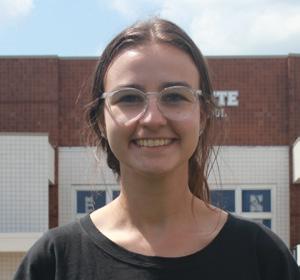
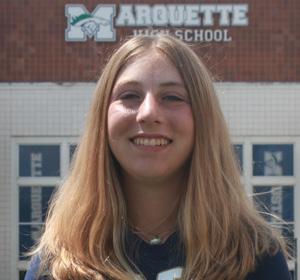

The police found a bomb in the building. There’s an active shooter on the third floor. Students have been shot and another one is dead.
Rumors like these circulated through social media platforms after MHS students and staff evacuated due to online threats on Thursday, Nov. 17, and Friday, Nov. 18.
The rumors started on Thursday when a bomb threat was posted on social media. On Friday, another threat, this time concerning a gun, was AirDropped to students in the building.
The police found nothing in the building both days, and the creators of the threats were caught within a week.
This situation at MHS was scary for many students, but the exaggerated rumors were the real threat in the end.
Our parents remember where they were when they heard the Twin Tow-
ers had been attacked on 9/11. Our grandparents remember where they were when they heard President Kennedy had been shot. During both times of emergency, people looked to the newspapers or news channels for information on the events, but that isn’t the case today.
Today social media platforms make it easier to spread information. We must be more careful to control the spread of rumors than past generations. Our ability to create rumors is only limited by our imagination and the speed of our fingers.
Posting unverified claims during emergency situations undermines the hard work of the police and administration.
During the evacuations, the Mes-
senger staff messaged each other constantly trying to figure out what was true and what was rumors.
As a rule, journalists only publish accurate information during an emergency obtained from a credible source or witnessed firsthand. For example, sending out “MHS is being evacuated” follows this rule, but “there is a bomb in the building” does not.
We as students have to hold ourselves to this higher standard. To stop the spread of false information, we should only share what we know to be true — what we saw and heard with our own eyes and ears. We need to share with more common sense and less pure emotion.
Post, snap and tweet wisely.
After a long and hard fought battle, the LGBTQ+ community finally landed a bipartisan win in Congress.

Passed with a 61-36 vote in the Senate, the Respect for Marriage Act (RFMA) guarantees federal protection for interracial and same-sex marriages.
The RFMA was signed into effect by President Joe Biden on Tuesday.
Should Obgerfell v. Hodges, the landmark Supreme Court case that legalized same-sex marriage, be overturned, the legality of interracial and same-sex marriages would fall to the states.
This act will federally recognize the marital right of these couples and guarantee marriages would be protected across state lines, should they have been performed in another state.
This bill brings hope at a time when hate is high and acceptance is low. While there are protections in place, like the Equality Act, there is still a large community of people who aren’t accepting of the LGBTQ+ community.
It is incredibly important for legisla-
tion to promote the integration and acceptance of LGBTQ+ people into local communities and the national spotlight. We aren’t that different from everyone else. According to a survey by the CDC, 1 in 5 students do not identify as heterosexual.
When I came out for the first time, it was a difficult, challenging and confusing time in my life. Some people were loving and accepting; others were hateful, cruel and made me ashamed. There are people in my life who I know won’t accept me for who I am.
This act ensures the legal safety of those who tend not to fall under society’s standards of a “normal” relationship, but what does it guarantee for them socially? The respect of their family and peers? A free pass from the stares and gestures of disapproving strangers?
I am unbelievably excited for anti-discriminatory and anti-hate legisla-

tion, but it remains to be seen whether it will truly make advancements for those who have fought for their right to marry, their right to be acknowledged and their right to love freely.
My hope is that with the passing of this bill, those who haven’t before will finally recognize the legitimacy of LGBTQ+ marriages. Even if a relationship doesn’t fit one’s idea of love, it doesn’t mean it isn’t love.
When I looked around the living room at my family after Thanksgiving dinner, I was starting to notice a problem: instead of turning to each other, my family members were turning to their phones.
I catch myself doing this too: sometimes whatever Instagram notification I receive is more interesting than the card game my family is playing.
It all comes down to psychology. Every time we receive a notification, whether that be a text from our best friend or a tweet from our favorite celebrity, a rush of the “feel good” neurotransmitter dopamine is released into the pathways of our brain. This chemical reaction is eerily similar (though less intense) to the rush cocaine users feel after taking a hit, according to a 2018 blog post from Harvard University.
The good feelings associated with notifications cause us to check our phones more and more, eventually forming an addiction.
No level of interpersonal communication provides this kind of high.
How do we resist the beckoning of our electronics during designated family times like Thanksgiving, Christmas and Hanukkah?
My mom usually enacts this at dinner during holidays, which is helpful because it forces people to talk to one another.
Going to Christmas tree lots is always fun. So is sledding, if there’s snow on the ground.
Have someone else make up the password so you can’t override the limit. I have a screen time limit of one hour on Instagram, which I find very helpful because it allots the perfect amount of time to catch up on news and friends’ posts, but not too much time that I am constantly on the app.
Turning on this function is also beneficial to reducing screen time. If you are not regularly seeing notifications light up your phone screen, it makes it easier to stop checking.
To stop the spread of false information, we should only share what we know to be true — what we saw and heard with our own eyes and ears.The Respect for Marriage Act (RFMA) legally recognizes same-sex marriages. 71% of Americans support same-sex marriage, according to a 2022 Gallup poll. Illustration by Emma Tyulyayev Illustration by Emma Tyulyayev




Sam Shackelford, senior, walks into a training facility and prepares to use all sorts of different machines to track speed, bat path, ball spin and more.
Shackelford said this technology has changed the way he trains for baseball.
One machine tracks the distances and direction he hits and records that information on a screen.
“Because when you’re in the cages, you obviously can’t see how far the ball goes,” Shackelford said.
Justin Rosen, director of the St. Louis Pirates baseball organization, said he has seen technology change as he has been training players since 2005.

Proteus, for example, is different from other technologies as the machine shows athletes specific muscles to
improve on, and not only stats, Rosen said.
“It uses 3-D resistance, so you’re gonna have resistance forwards, backwards, up, down, left and right,” Rosen said. “Then it will actually print out a report or email you a report telling you you’re weak on your left side or right side.”
Rosen said there’s only about 150 of these machines in the nation and they have had one in their Pirates facility for about two months and have already seen success with their athletes.
This technology, he said, is some-
thing that will help elevate the way sports are trained.
Rapsodo or Blast Motion are additional devices that help show a player the results they are getting analytically from their training, Rosen said.
“Everybody is gauged by numbers right now,” Rosen said. “Everybody’s analytically driven.”
These technologies help show results, but Rosen said it’s easy to manipulate those numbers but still hit with the wrong form. That’s why the Proteus is necessary because it corrects the form, and unlike Rapsodo and Blast
Motion, Proteus can be used for any sport training.
Rick Strickland, St. Louis Pirates coach, said when his major league club asked him what to get, he said Proteus and the program, S2 Cognition because they tell players what they need to know and work on, but players also have to know what they’re looking for within them.
“Technology is wonderful, but it’s not the teacher,” Strickland said. “Technology is like an accountant.”
When Gavin Marsh, senior, was growing up playing a variety of sports, he always thought he would play basketball or baseball at the collegiate level.

“My end goal was to always play college sports,” Marsh said. “But, it wasn’t until last year that I realized it was going to be college football.”
Marsh didn’t start playing football until eighth grade, but quickly found a love for the sport. He has been on the football team since his freshman year, and he started getting noticed by college recruiters during his junior season.
Schools from around the country recruited Marsh, and after weighing all his options, he chose the University of Missouri (Mizzou) for football.
Marsh is a preferred walk-on for
Mizzou, meaning he will play on the team but will not receive scholarships.
Marsh was offered financial scholarships to play at smaller schools like Eastern Illinois University and Valparaiso University, but he said he would rather play for a large, Division I football program as a preferred walk-on.
“Mizzou is the best opportunity for me,” Marsh said. “I really feel like I can excel with their football program.”
Marsh said he knows a lot of people going to Mizzou and it is close to home, both driving factors in his decision.
Activities Director Adam Starling said Signing Day each fall is special because it provides an opportunity to celebrate the talents of student athletes.
“The coaches and staff put in a lot of time working with Marquette students,” Starling said. “To see them
• Audrey Bast, University of Tennessee, Rowing
• Jessica Dodd, Eastern Kentucky University, Soccer
• Jack Holubowski, University of Missouri, Baseball
• Nick Lee, University of San Diego, Rowing
• Warner Lenahan, Truman State, Baseball
accomplish great things and be able to continue their playing career after they leave Marquette always makes us proud.”
Lauren McGauley, senior, chose between more than 10 schools to play field hockey at and finally verbally committed to DePauw in October.
“I picked DePauw because I really like the feel of the team, and I could see myself on the campus,” McGauley said. “And, they also have the major I want, so I am confident this is the best choice for me.”
Like Marsh, McGauley said she didn’t realize she wanted to play college field hockey until recently even though she started playing in eighth grade.
“I realized I’m not ready to stop playing anytime soon,” McGauley said.
Madison Carney, senior, is committed to play softball for Southeast Missouri State University (SEMO).
• Lauren McGauley, DePauw University, Field Hockey
Morgan Meador, University of Missouri, Soccer
• Ava Quallen, Clemson University, Rowing
• Anna Sainato, Lewis University, Soccer
• Audra Yoder, Rockhurst University, Lacrosse
Information from the Activities Office
She was out of town on the day of the original signing day, so Carney and her family held their own signing day in Principal Dr. Steve Hankins’ office.
“I actually enjoyed having my own,” Carney said.
Carney said she liked the more intimate feeling of her signing day.
Carney’s parents, personal trainer, club coach, high school coach and best friends were there to celebrate her.
“The people who came are the ones who have supported me the most in this process,” Carney said.
Carney verbally committed in March of 2022, and she said picking SEMO was not a hard decision for her. She loves the coaching staff, and she got a good feeling while visiting and walking around the campus.
“It feels like a place that I can really thrive at,” Carney said. “I’m excited to embark on this new journey of becoming a college athlete.”
“I realized I’m not ready to stop playing anytime soon,”
Lauren McGauley, seniorRick Strickland and Justin Rosen teach a lesson on how to use the Proteus machine. This technology informs athletes on what muscles to improve on. Photograph by Jacob Robinson
Machines, gadgets, apps improve performance
Having lived in Brazil for five years, Lucas Tourinho, sophomore, has always enjoyed the huge soccer presence in the country.

“For Brazilians, soccer is in our genes. In Brazil, you literally don’t go to school. Whenever your country plays, you stay at home, including teachers and faculty,” Tourinho said. “That is how big the World Cup is to us Brazilians.”
The World Cup started on Sunday, Nov. 20 and ends on Tuesday, Dec. 20.
Tourinho supports Brazil in the World Cup because of the country’s historical success in soccer.
“Brazil stands out because we’ve won five World Cups, almost winning three in a row,” Tourinho said. “We’re the only country to actually keep the trophy from the tournament.”
Nolan Henry, senior, supports the U.S. Men’s National Team (USMNT) because of his love for American soccer and having lived in the U.S. for all of his life.
“I just love seeing them play and represent the country,” Henry said. “The new and younger team that we have this year have competed really well against big teams and it’s great to see.”
With Americans being polarized on many political issues as of recent, Henry said the U.S. participating in the
World Cup brings people together.
“It just pushes the bad stuff aside and brings us together with soccer,” Henry said.
Chloe Kang, senior, is from South Korea and is proud to see the South Korean national team perform.


“I do hold lots of value from my culture, and it’s just great to see the South Korea team represent us on the world stage as a whole,” Kang said. “I think nationalism in this sense increases the pride and love for your own country. It brings people together just to play a simple game of soccer”
Kang is appreciative of South Korea’s progress and effort put into this year’s World Cup.
“Even if we didn’t win the World Cup, it was just really great to see us be happy and share happy moments with each other,” Kang said. “The fact that so many people went to Qatar to support South Korea just meant so much to me.”
Former MHS social studies teacher and soccer player Chris Kenny said that the World Cup gives people a greater connection to their nation.
“You have star players who are typically playing for their clubs, but the World Cup is different in the sense that they are now playing for their country. It makes people feel spiritually connected to their country as a result,” Kenny said.
Kenny notes that there nationalism can reach really high and bad levels, but sporting bodies like Federation Internationale de Football Association (FIFA) attempt to prevent those issues from getting out of hand.
“FIFA does try to control problems with nationalism with fans and players causing issues. They do issue sanctions to their respective federation and punish the troublemakers,” Kenny said.
As a former soccer player for the St. Louis Ambush and St. Louis Steamers, Kenny felt honored and responsible to represent St. Louisans well during his professional career, like the players participating in the World Cup.
“The teams I played for had mostly St. Louis players, and I always felt a certain pride and responsibility of how I played, prepared and was the best teammate I can be,” Kenny said.
Matthew Nanes, political science professor at Saint Louis University, said nationalism generally is a benefit in the World Cup.
“It’s interesting to me that every four years in the U.S., everyone becomes a soccer fan because of the World Cup, and with that people have a shared sense of identity,” Nanes said.
Nanes said the World Cup bridges gaps between countries across the globe.
“Hosting the games in a place where fans are less familiar with is generally a positive thing,” Nanes said. “The interaction, transparency and media coverage allows visitors to understand more about the host country.”
“I think nationalism in this sense increases the pride and love for your own country. It brings people together just to play a simple game of soccer.”Chloe Kang, senior, dribbles the ball down the field. While Kang does not play competitive soccer, she enjoys watching the South Korean national team play. “It’s just great seeing Korea represented as a whole on the world stage,” Kang said. Photograph by Shyam Punnachalil
“I have a group chat with my family and we talk about it. We were really proud when South Korea made it to top 16.”
“I watch the games with my family. We have really big watch parties. I work at Tre Cuori, and we watch the games inside the restuarant, which is really fun.”Photographs by Shyam Punnachalil